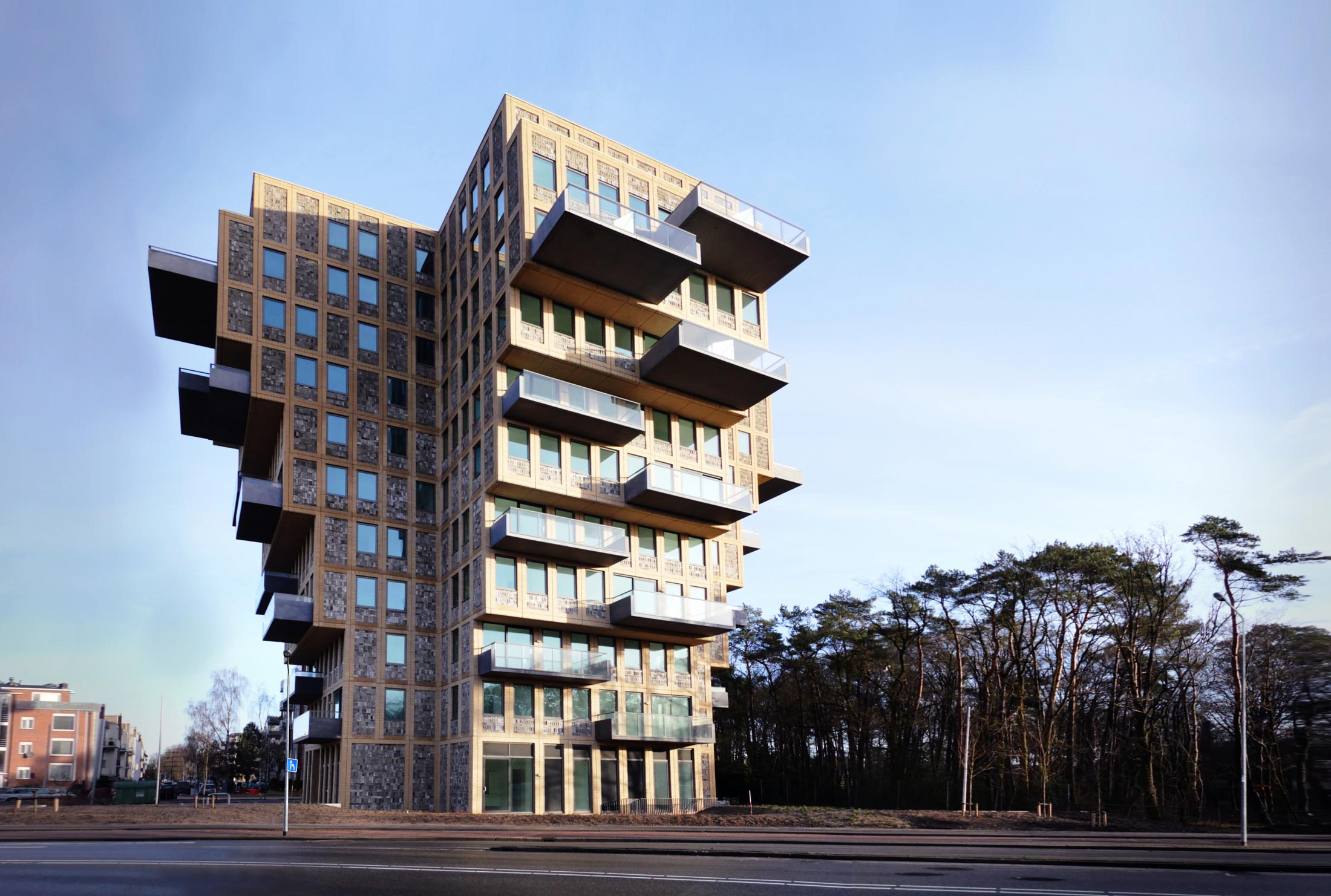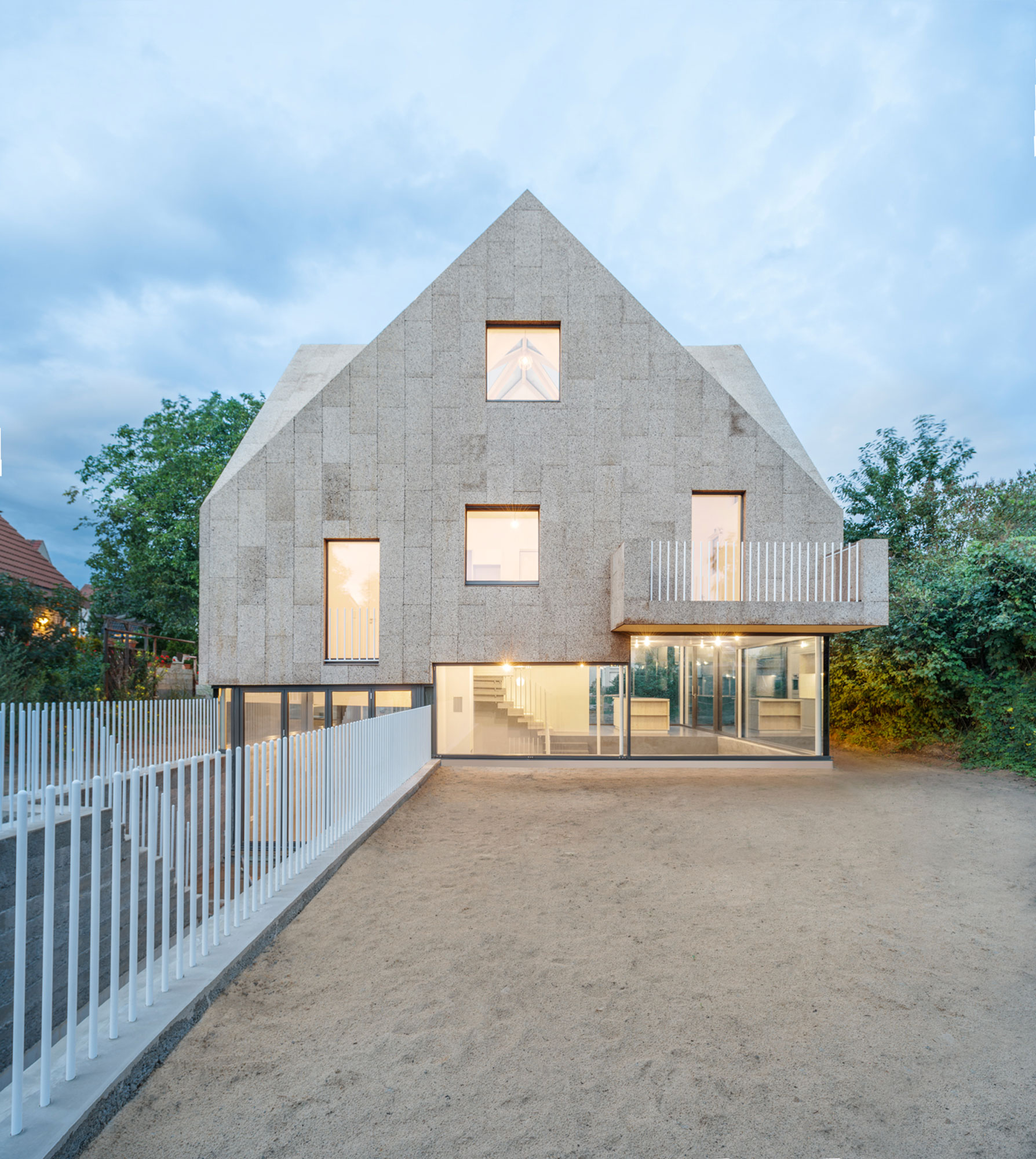
CORK SCREW HOUSE | RUNDZWEI ARCHITEKTEN
Maximizing living space between rammed concrete and a cork roof.
A flexible residence by rundzwei Architekten
Description provided by rundzwei Architekten. The young office rundzwei Architekten has realized an unusual residence with a cork facade and roof. A base of rammed concrete lies below the ground level. Above, skilfully stacked split levels, which allow for flexible use, are accessed via a central, atrium-like staircase.
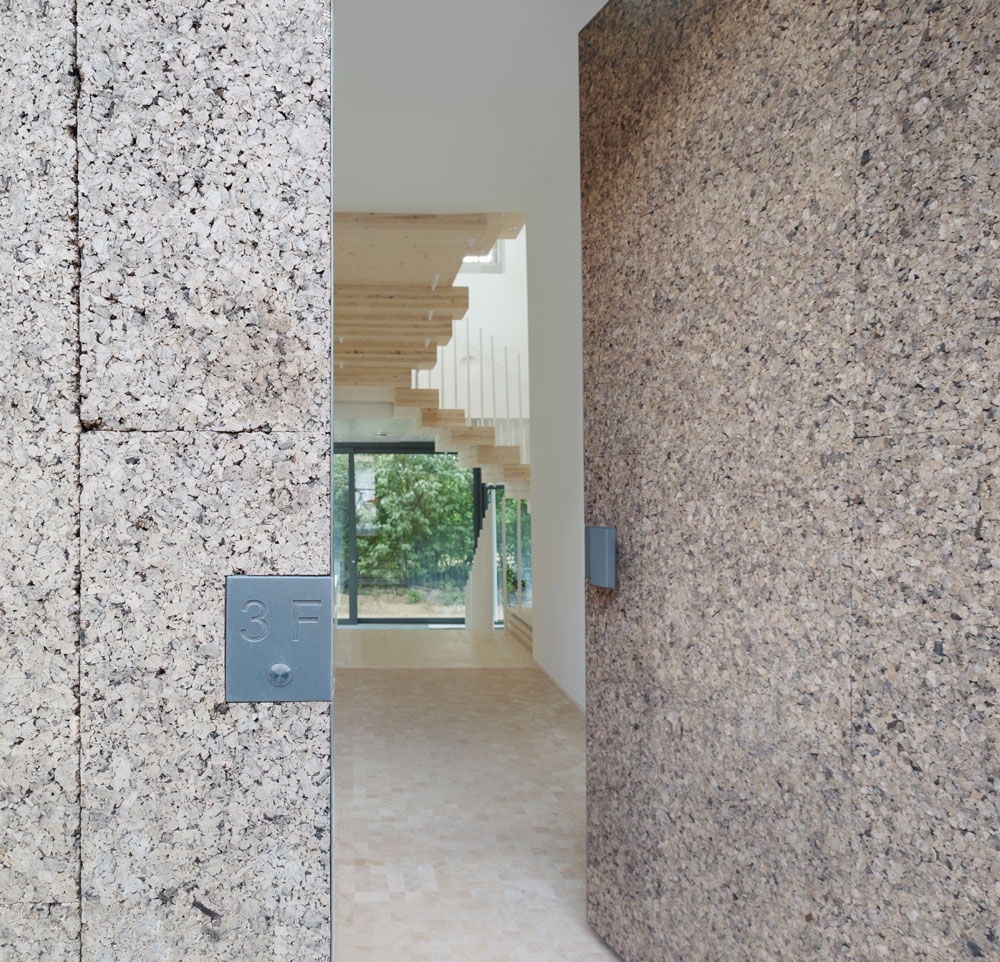
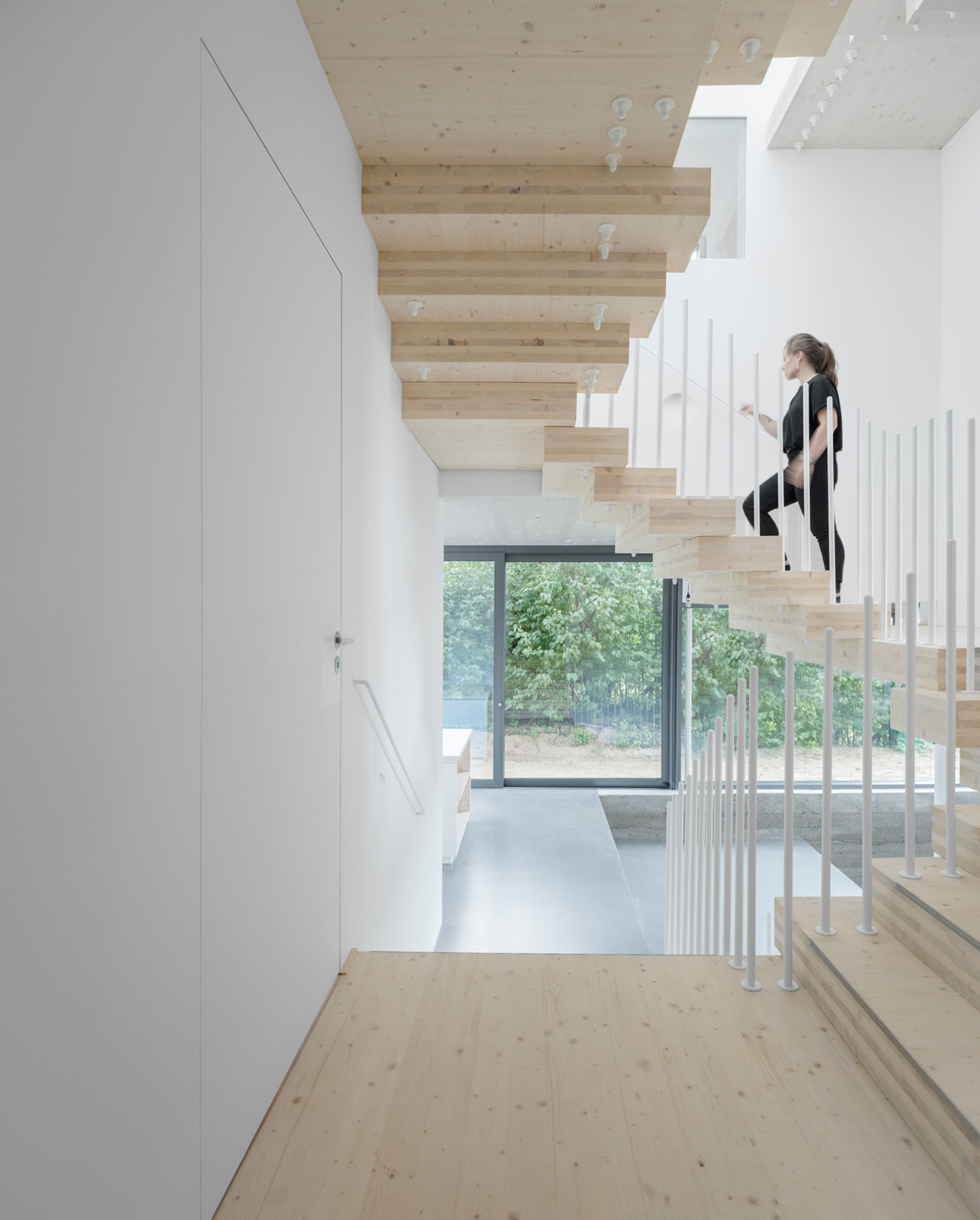
A base made from rammed concrete
Office principals Andreas Reeg and Marc Dufour-Feronce place special attention on the local connection of their buildings.e for the lower ground living levels. The outdoor walls of the long stretched pool are also lined with the material. The base was rationally applied in layers and then manually compacted. This results in an open, porous and characterful textured surface.
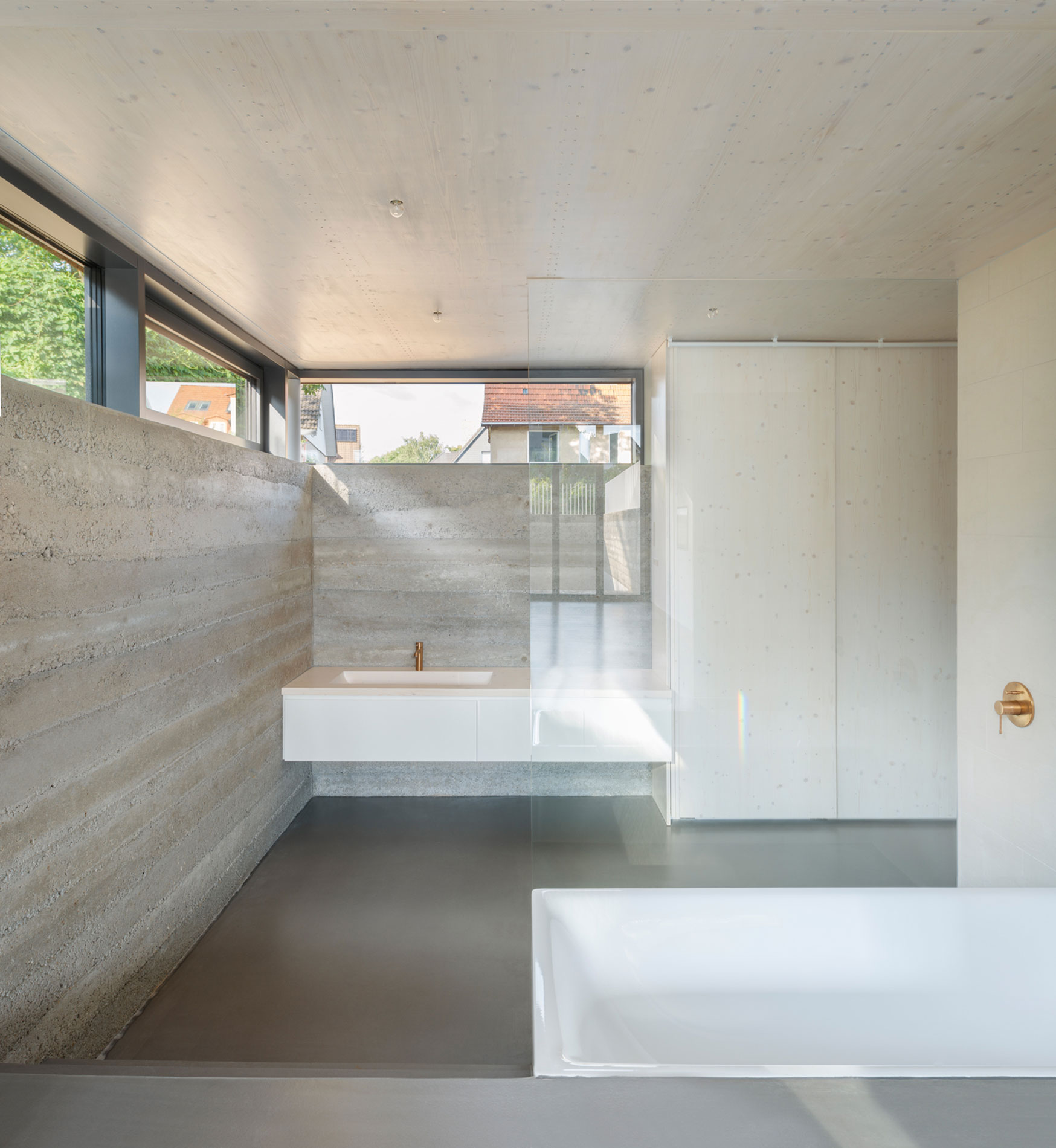
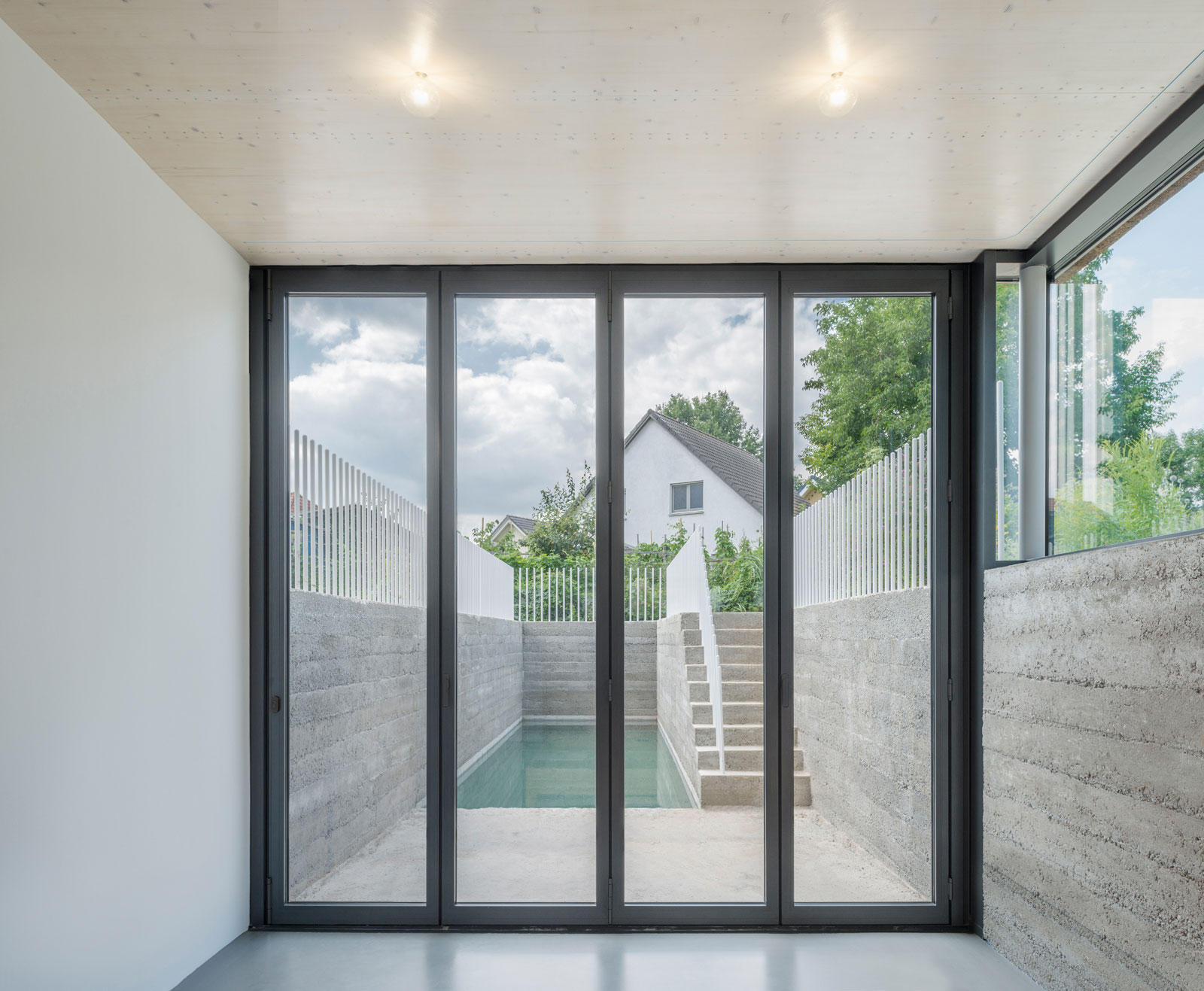
Maximizing usable area by lowering floors and introducing multi split-levels.
Although the local planning regulations allow for a maximum floor size of 100m2, by lowering the base floors and arranging the upper floors in multiple split-levels, the architects have maximized the gross floor area to over 320m2. The planning concept of two-part construction – base and top – was maintained for the material selection: the levels below ground are built in rammed concrete with the upper levels framed in timber.
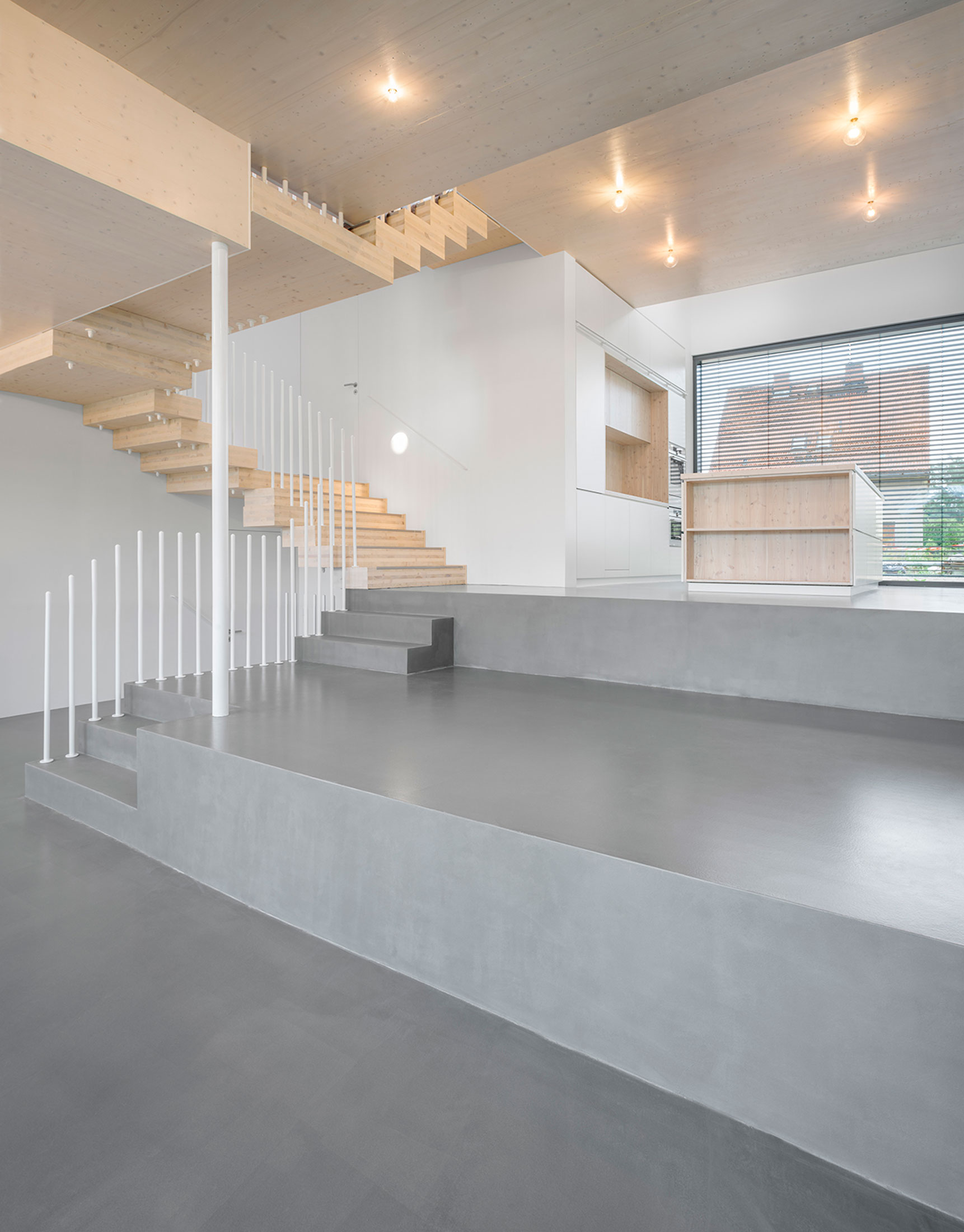
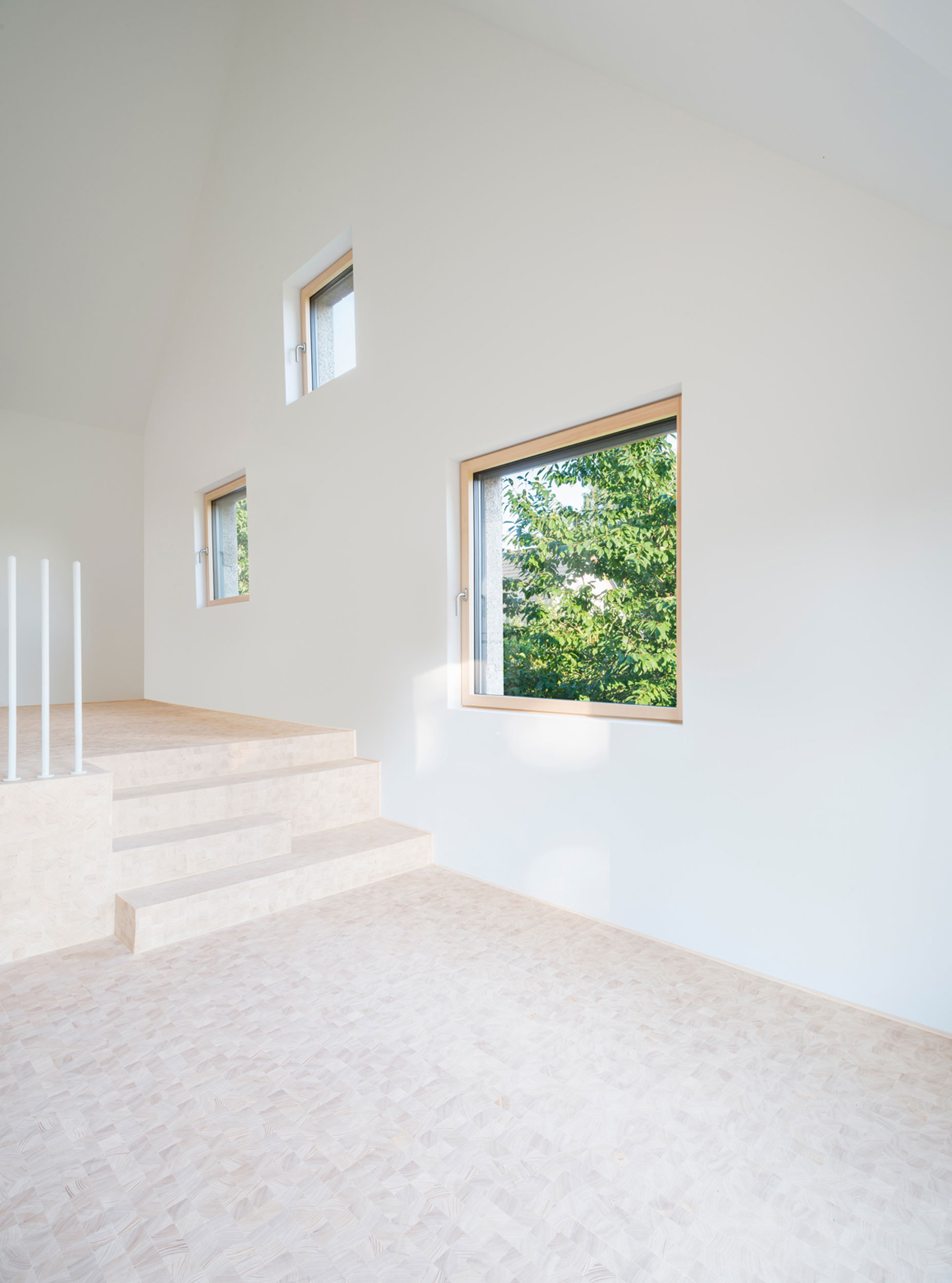
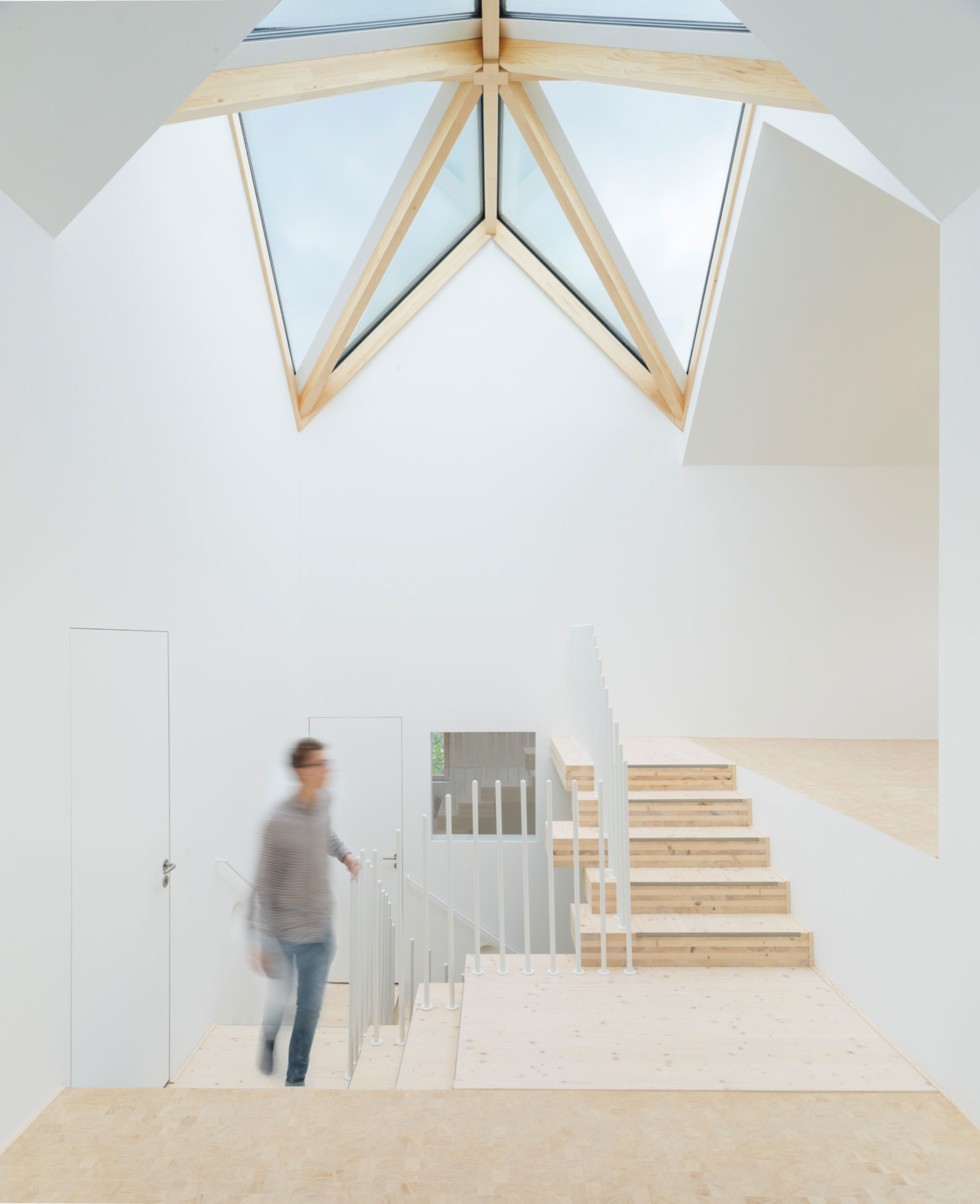
Cork panels on facade and roof
On the ground floor, large-scale glass elements fill the interior with daylight. The facades above, as well as the roof surfaces l in Portugal. As a by-product of the cork production process for bottles, granulated cork waste is formed into facade panels under pressure and heat. During this process, the natural resins of the cork are released, binding the granulate thereby creating a lightweight and durable cladding material through sustainable methods. The resulting cork facade panels are naturally weather and mold-resistant without any artificial additives.
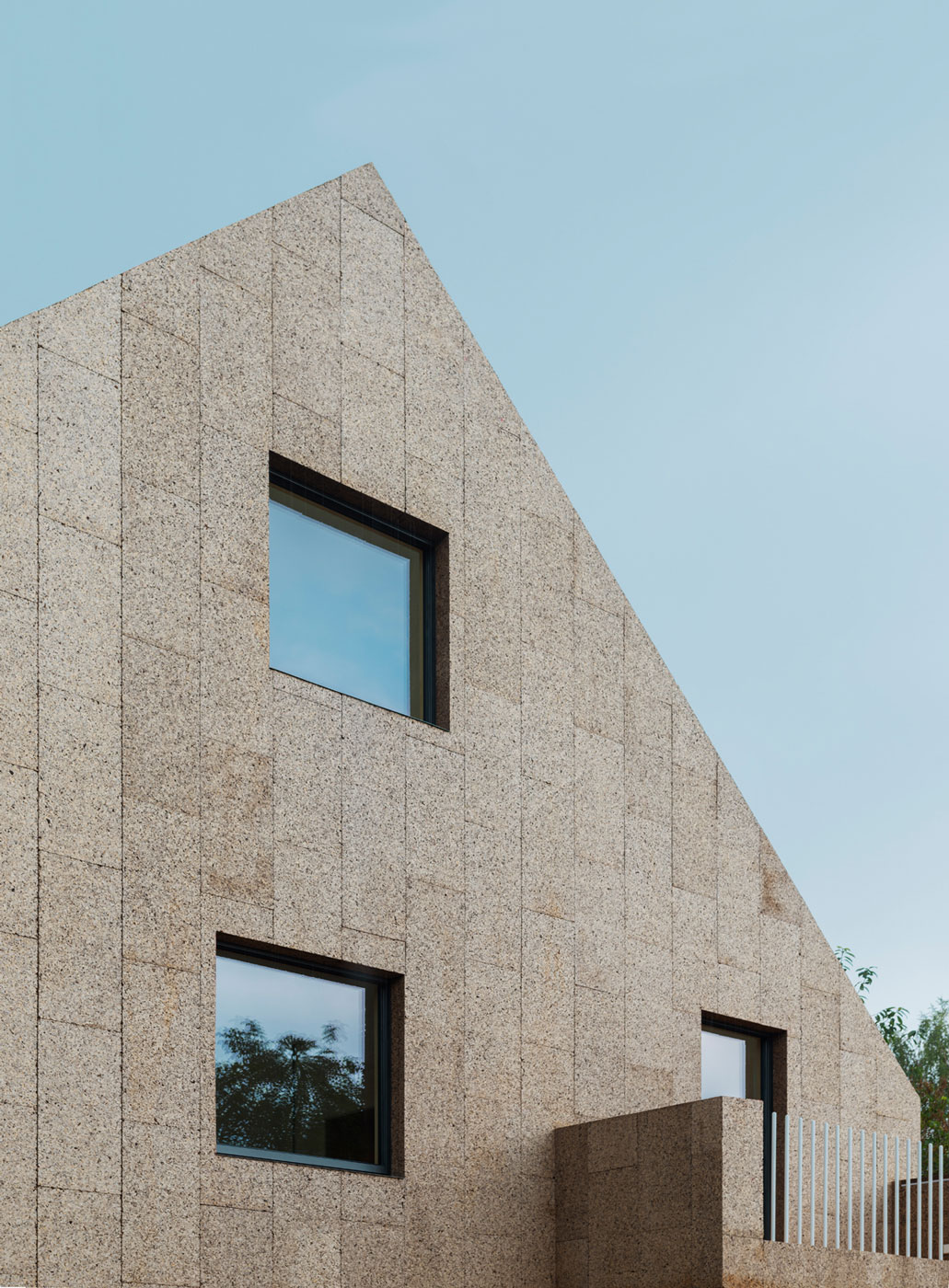
Natural cork has very high insulation values and is well suited to use as a monolithic facade cladding. The choice of this material contributes significantly to the energy efficiency and sustainability of the building. Cork also provides good acoustic insulation and reduces the sound of dripping rain. Initially, it was through the client’s interest in achieving good acoustic performance that the architects came across this unusual choice of material.
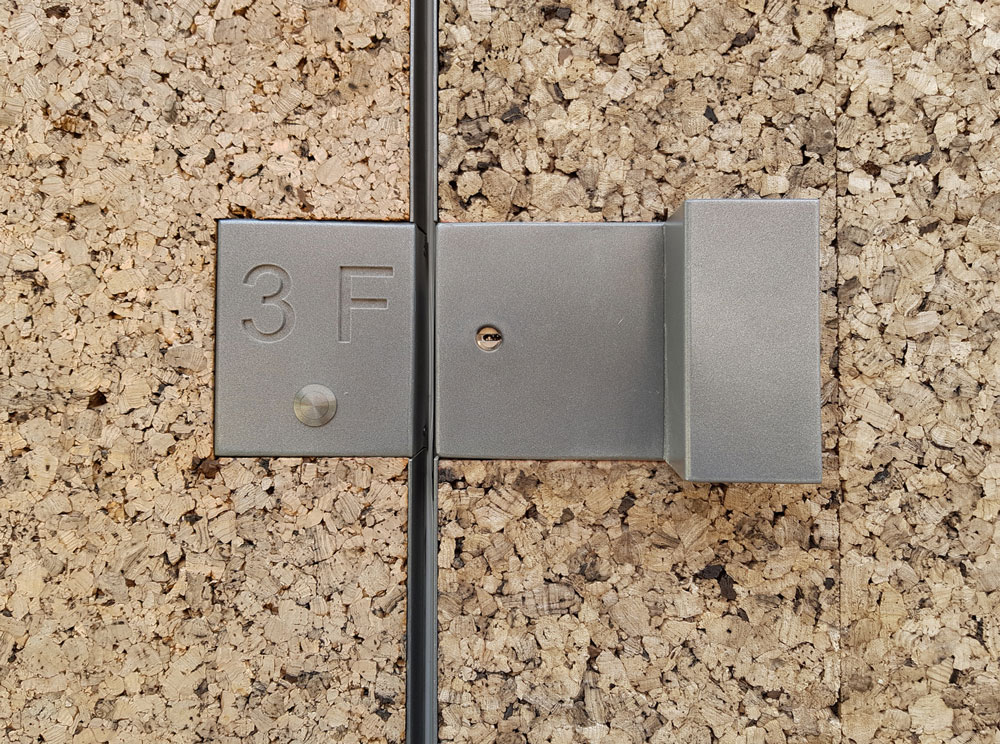
Natural construction materials, natural ventilation
During the construction process, the architects abstained from the use of chemical adhesives and construction foam. Wood fiber and cellulose insulation materials were used in addition to the insulating cork panels. Humidity absorbing materials such as timber and gypsum fiber boards with permeable paints allow for a natural room climate. As a result, the building doesn’t need an active ventilation system despite the very low energy standard. Through a stratified heat storage system supplemented by roof-integrated solar panels, the heating supply is almost self-sufficient adding to the efficiency of the building’s overall performance
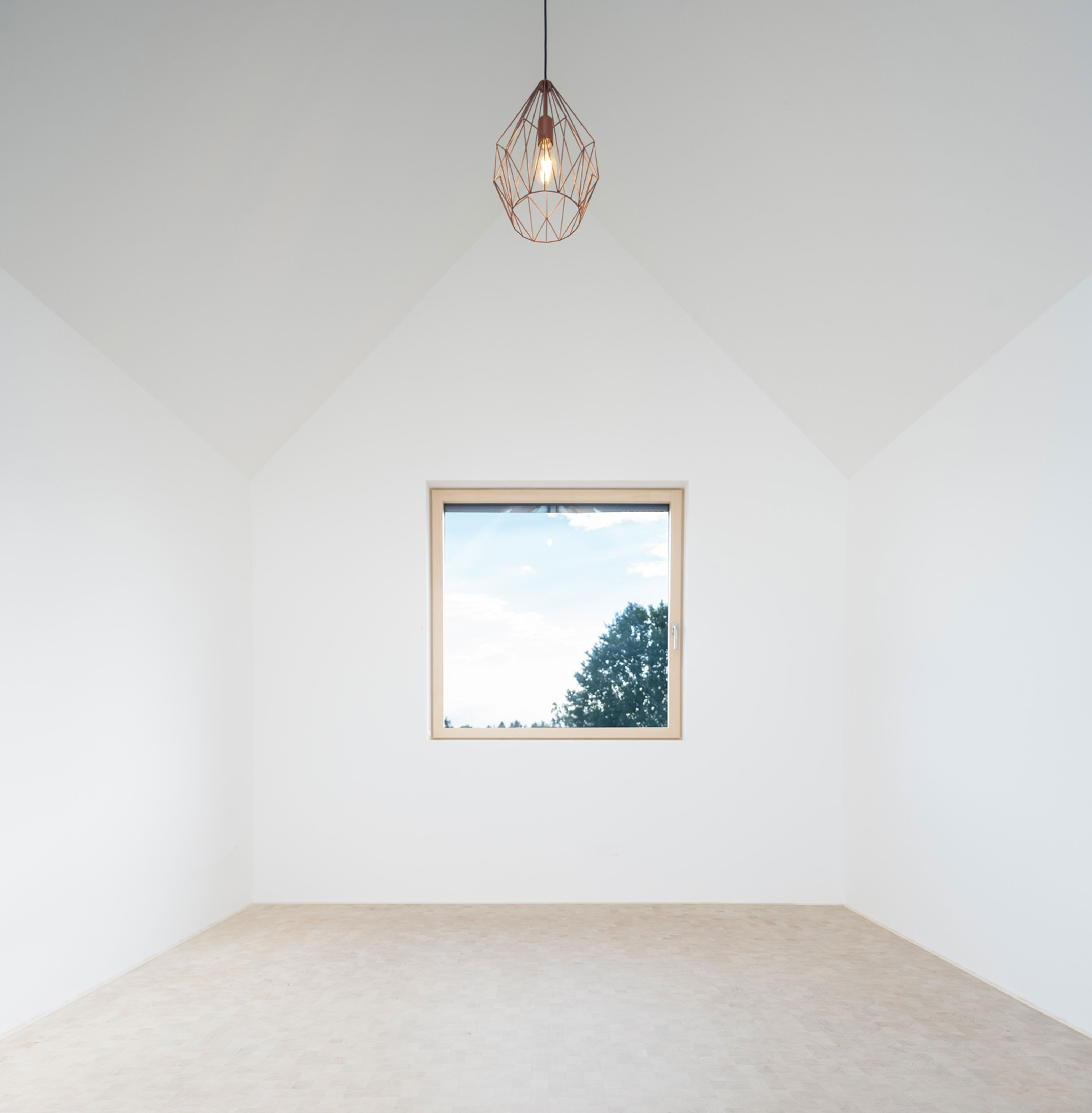
Flexible living
The house was planned for three. The base of the building incorporates a bedroom next to the living and kitchen area. This room has direct access to the exterior sunken pool. This feature stretches from the house into the garden while maintaining privacy from the neighbors through the surrounding rammed concrete walls. The smaller rooms on the upper levels are accessed via the central circulating stair. They are partially connected and in the future could be used as studio apartments. To provide future flexibility, the architects have allowed space and structural provision for a potential second entrance in the façade.
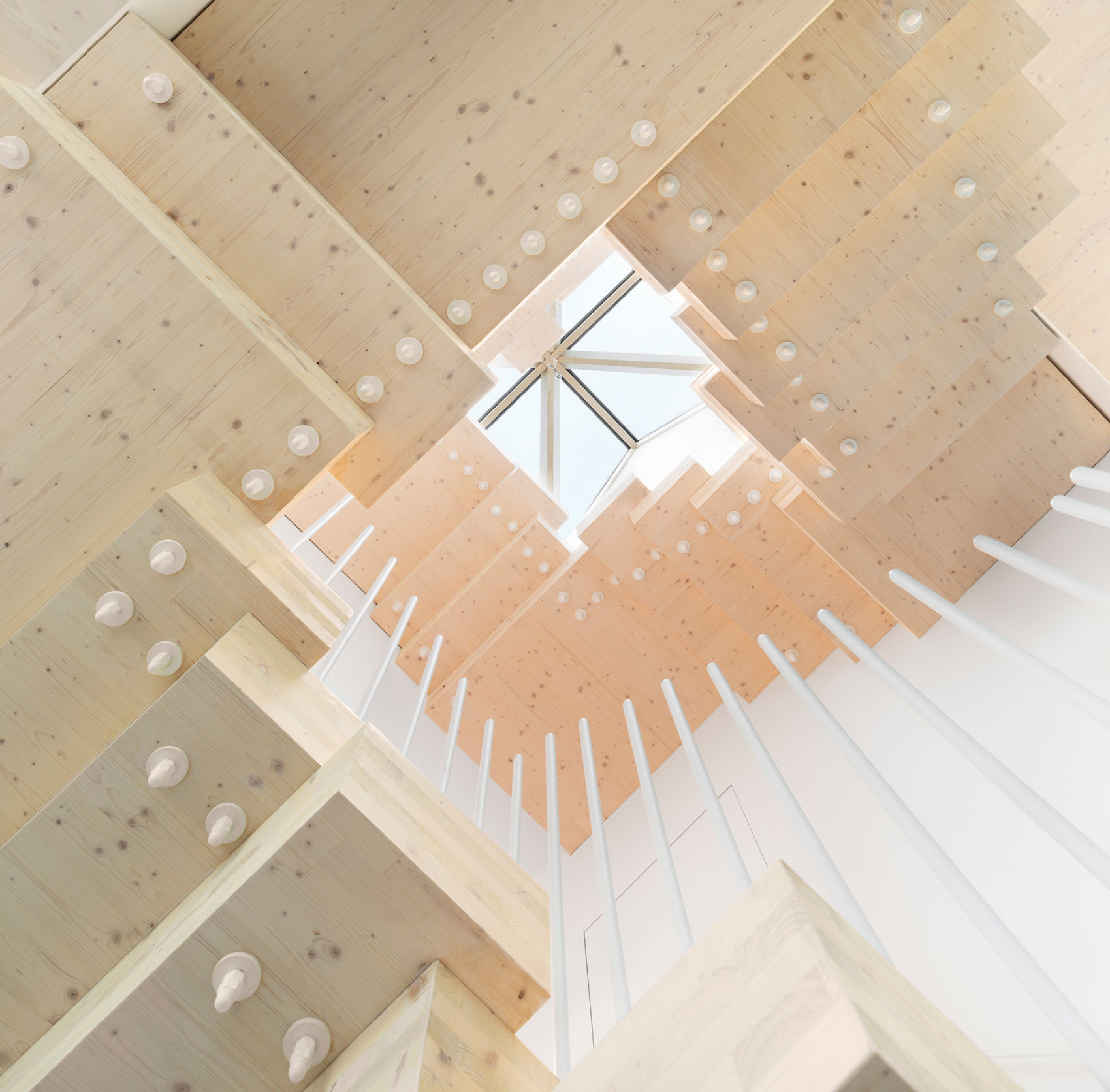
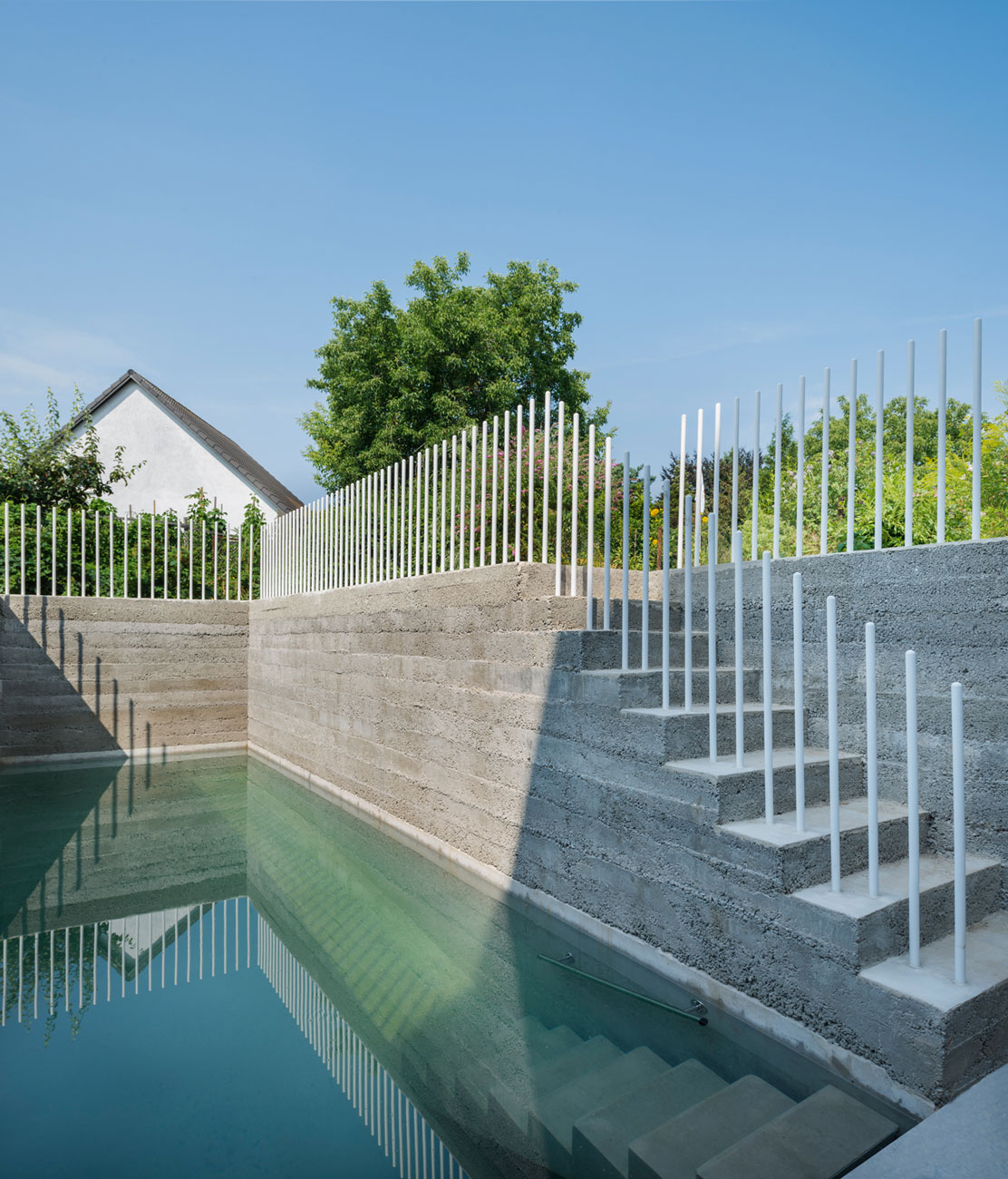
Project Details
Project Team rundzwei Architekten
Luca Di Carlo
Ana Domenti
Marc Dufour-Feronce
Andreas Reeg
Contractors / Products
Cork facade by Johannsen Timber Constructions (Product: Ziro GmbH / Amorin S.A.)
Windows by Timm Fensterbau GmbH (Product: Schüco and Alco)
Timber Stair by Johannsen Timber Constructions (Product: Storaenso)
Pool by Seeigel GmbH
Rammed concrete by Caerus Construction
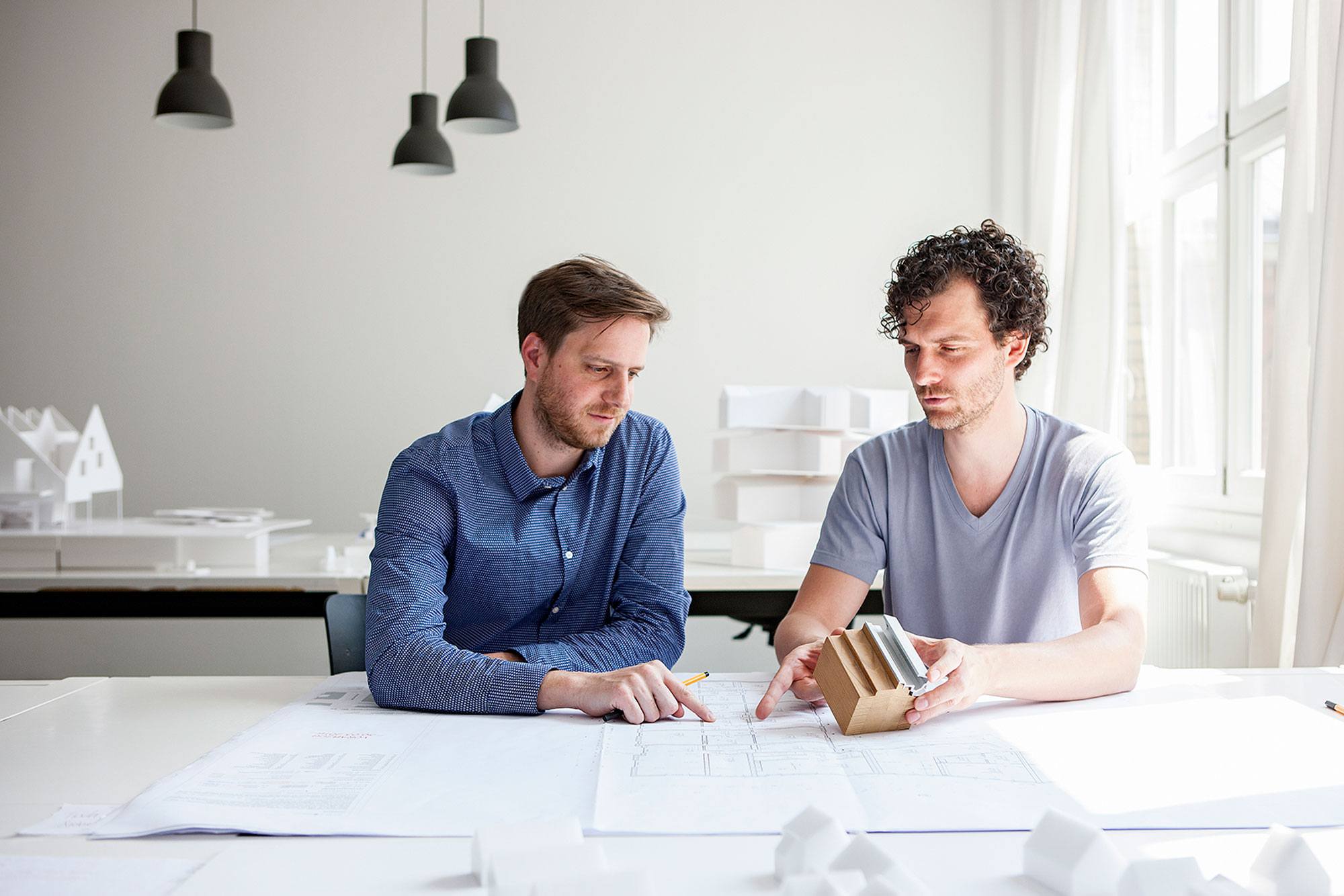
About rundzwei Architekten
rundzwei is a contemporary architectural office founded by the two (germ. zwei) principals Andreas Reeg and (germ. und) Marc Dufour-Feronce. rundzwei considers research and (und) design as two (zwei) central components of a sustainable and contemporary architectural process, which combines space planning, materiality, resources, local history and environmental understanding within a sophisticated design approach.
Before founding rundzwei Marc Dufour-Feronce and Andreas Reeg held leading positions working for international renowned offices including Herzog & de Meuron, LAB architecture studio and ACME in Switzerland, the UK and the UAE. Their project experience includes masterplans, housing towers, museums and exhibition spaces, shopping centres and residential units.
Contact
rundzwei Architekten Reeg & Dufour PartGmbB
Andreas Reeg und Marc Dufour-Feronce
Goethestrasse 2-3
DE-10623 Berlin
Germany
+49 30 202 376 45
info@rundzwei.de
www.rundzwei.de


